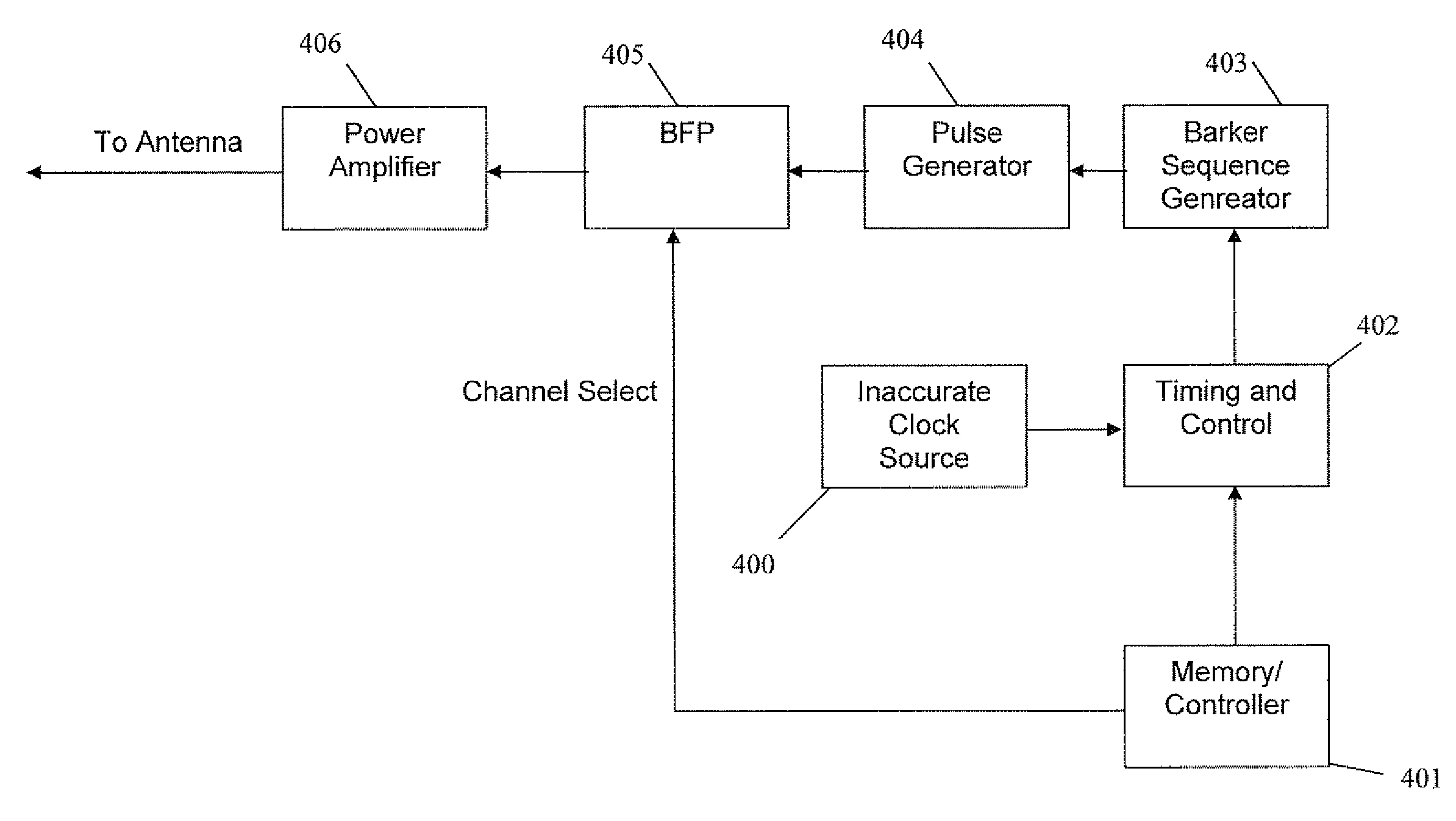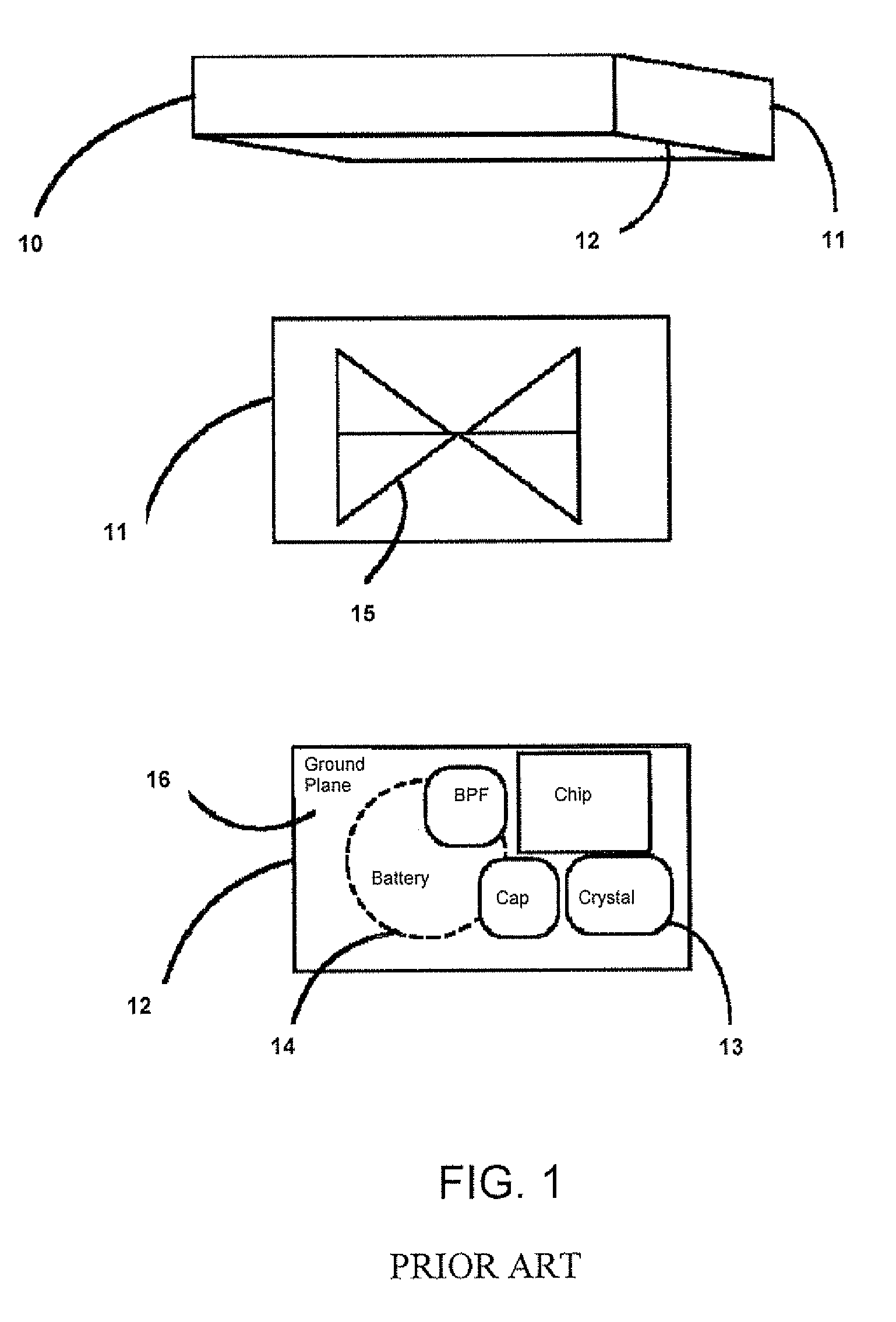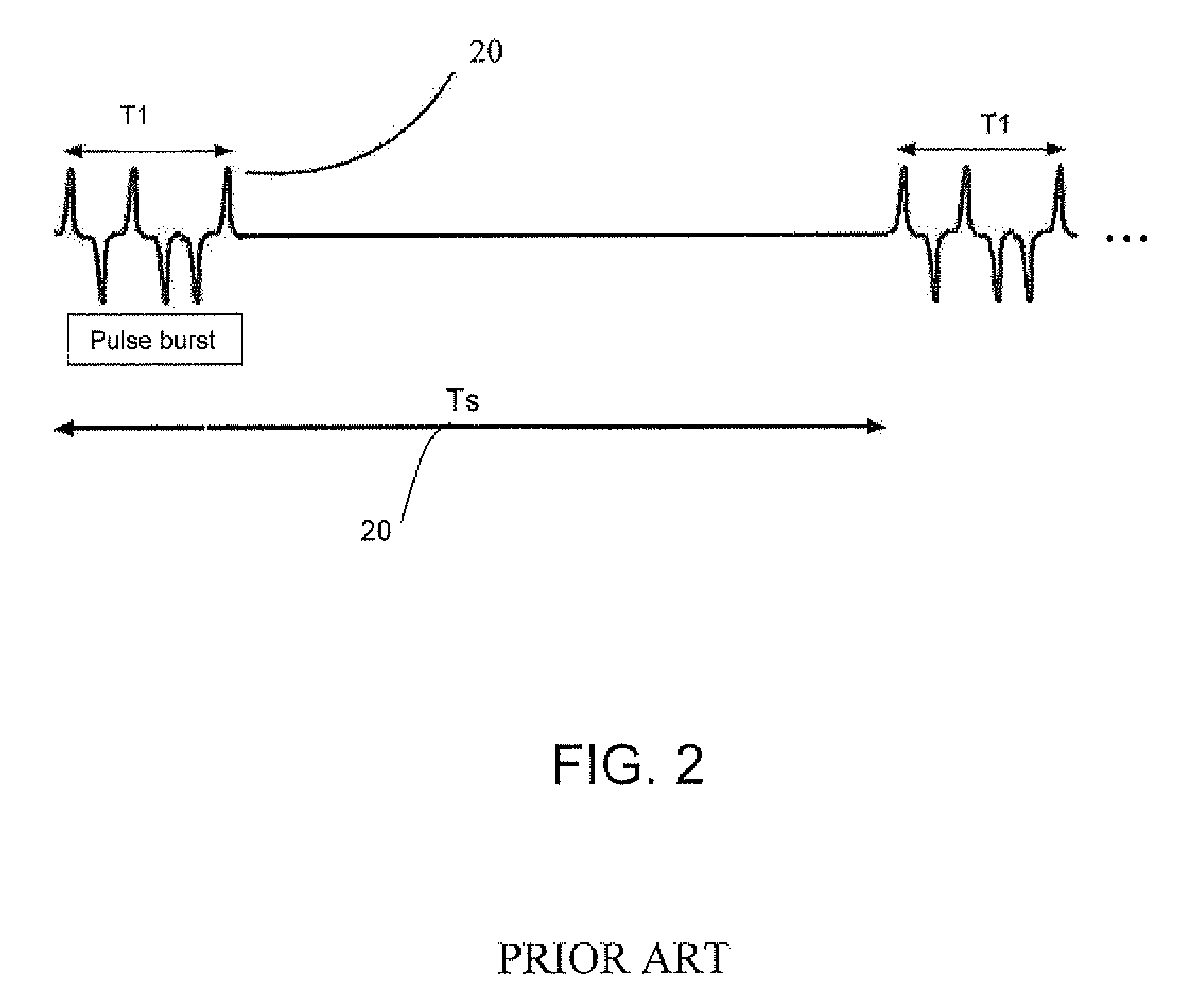Wide band RFID system with tag on flexible label
a flexible label and wide band technology, applied in the field of thin rfid tags, can solve the problems of low capacity of printed batteries compared with lithium coin batteries, inability to achieve crystal, etc., to achieve the effect of improving the tag synchronization, reducing the average power consumption of a battery powering, and low duty ratio
- Summary
- Abstract
- Description
- Claims
- Application Information
AI Technical Summary
Benefits of technology
Problems solved by technology
Method used
Image
Examples
Embodiment Construction
[0027]The present invention is of a system and method of ultra-wide band RFID communications. Specifically, the system includes an RFID tag implemented as a flexible label without an accurate timing or frequency source, e.g. a crystal, and the method of communications and the communications format used between the tag and the reader are appropriate and compensate for the absence of an accurate timing source incorporated into the tag.
[0028]The principles and operation of a system and method of RFID communications with a tag implemented as a thin label, according to the present invention, may be better understood with reference to the drawings and the accompanying description.
[0029]Before explaining embodiments of the invention in detail, it is to be understood that the invention is not limited in its application to the details of design and the arrangement of the components set forth in the following description or illustrated in the drawings. The invention is capable of other embodi...
PUM
 Login to View More
Login to View More Abstract
Description
Claims
Application Information
 Login to View More
Login to View More - R&D
- Intellectual Property
- Life Sciences
- Materials
- Tech Scout
- Unparalleled Data Quality
- Higher Quality Content
- 60% Fewer Hallucinations
Browse by: Latest US Patents, China's latest patents, Technical Efficacy Thesaurus, Application Domain, Technology Topic, Popular Technical Reports.
© 2025 PatSnap. All rights reserved.Legal|Privacy policy|Modern Slavery Act Transparency Statement|Sitemap|About US| Contact US: help@patsnap.com



